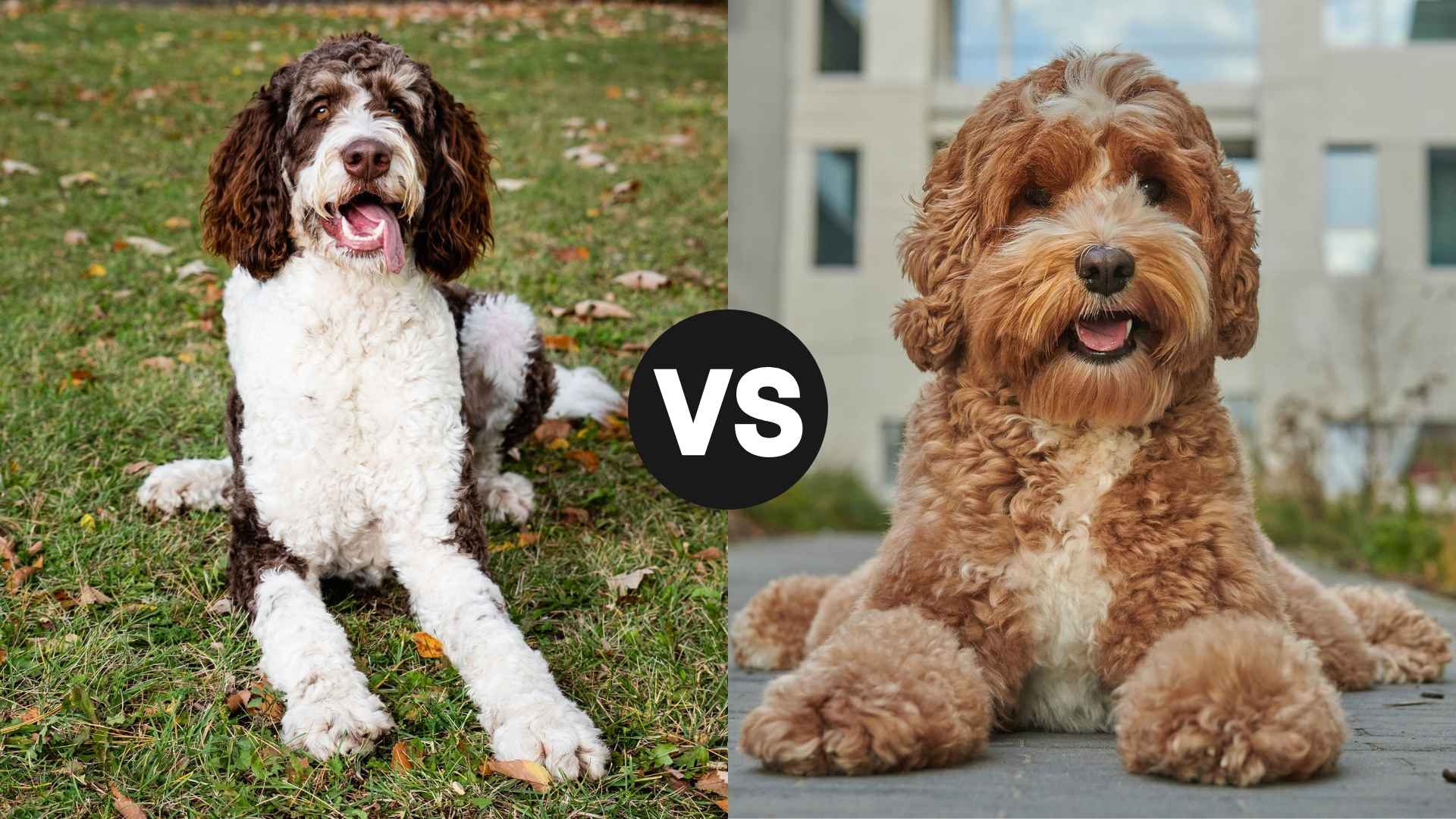Dogs have always been lovable and endearing creatures. We adore them for their companionship, nuzzles, cuddles, furryness, and giddiness. But just hold your heart and sit somewhere, because you’ll be knocked out of breath and get your heart rate raised by what you are about to encounter. Yup! Welcome to the fashionable dog planet, where the fluff levels are high and the joy can be found in every corner.
You are going to be swamped with the cutest and happiest puppies that have a gentle and affectionate nature, along with bucket loads of merriness and delight. So, hop on this fun ride and be prepared to make a difficult choice, as you are going to meet your perfect furry friends and fluffy puppies on the other side.
Bernedoodle vs. Labradoodle: Which Is Better With Kids?
|
Labradoodle |
Bernedoodle | |
|---|---|---|
|
Height |
14-24 inches (depending on the size of the poodle parent) |
12-29 inches (depending on the size of the poodle parent) |
|
Weight |
15-65 pounds |
10-90 pounds |
|
Life Expectancy |
12-14 years (depending on the size of the poodle parent) |
12-18 years (depending on the size of the poodle parent) |
|
Energy |
High |
Moderate to High |
|
Exercise needs |
1 hour + |
1 hour + (more willing to cuddle with a tendency to snooze off) |
|
Trainability |
Highly trainable, but excitable |
Highly trainable, but easily distracted, and stubborn |
|
Persona |
Friendly, social, loyal, often excitable, adaptable, curious, and a packet full of fun |
Friendly, loyal, not fond of strangers, smarty pants, playful, can be more cuddly |
|
Coat |
Hair, Fleece, or Wool Coat |
Curly, Wavy, or Straight |
|
Fluff Level |
Poofy Wonder of a Cloud |
Soft furry bliss |
Labradoodle vs. Bernedoodle: Key Visual Differences
The result of genetic diversity, both of these hybrids make fantastic companions and fluffy friends for children. These Poodle mixes have a similar purebred factor as their parent breed, yet they are quite distinct from one another.
Purina says both Bernedoodles and Labradoodles have an element of surprise and unpredictability in their visual looks because they are bred from different individuals that vary in coat colors, size, and looks.
Labradoodle Appearance:
The Labradoodle is the cutest combination of bright, friendly, round eyes, a round button nose, and floppy ears. Their coat can vary depending on the parent breeds used and their generation type; it can be curly, wavy, or straight.

They come in a variety of shades from brown, apricot, lavender, cafe au lait, cream, black, and multi-color. Chocolate, yellow, and black Labradoodles are the most common.
Their ears sit around eye level and hang down beside their head, and their prominent nose is usually black or brown. Most Labradoodles have long tails that point happily towards the sky like merry flags, which is a common trait they have inherited from Labs.
Bernedoodle Appearance:
The Bernedoodles can vary in size, depending on the Poodle lineage. They are available in standard size, medium-sized, miniature, and toy versions. They have a broad, deep chest, straight back, and strong neck. A beautiful tricolor coat of black, white, and brown that they inherit from their Berner parent, or a solid or bi-color coat due to their Poodle lineage.
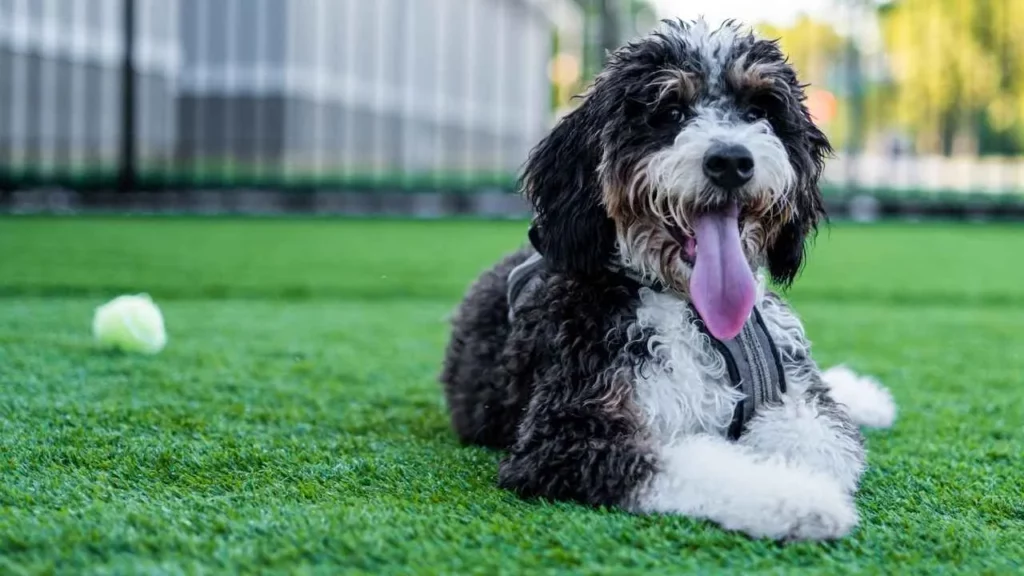
Bernedoodles tend to have thicker fur than Labradoodles. They have wavy or curly, fluffy coats. Bernedoodles also have adorable, expressive eyes that are either round or almond-shaped and floppy ears that rest snugly against their wide head.
Their tail is often feathery, like a quill carried high or slightly curled when they are happily springing or frolicking around. Bernedoodles inherit the hypoallergenic traits of the Poodle parent.
Both Bernedoodles and Labradoodles are considered hypoallergenic breeds due to their low-shedding coats. Neither the Bernedoodle nor the Labradoodle sheds much, especially if they are second or third generation. Both breeds can still trigger allergies through their saliva, urine, or allergens caught in their coat, despite being hypoallergenic.
Bernedoodle vs. Labradoodle: Origins and Background
All praise goes to the Australian breeder Wally Conron, who introduced the crossbreed dogs to the Royal Guide Dog Association in Victoria in the 1990s. In hopes of combining desired traits like the low-shedding coat of a standard, miniature, or toy poodle with the gentleness and trainability of the Labrador Retriever to develop beautiful yet versatile puppies.
Labradoodles were originally bred as hypoallergenic guide dogs, ideal for allergy sufferers. They became so famous that it is now an object of fad popularity.
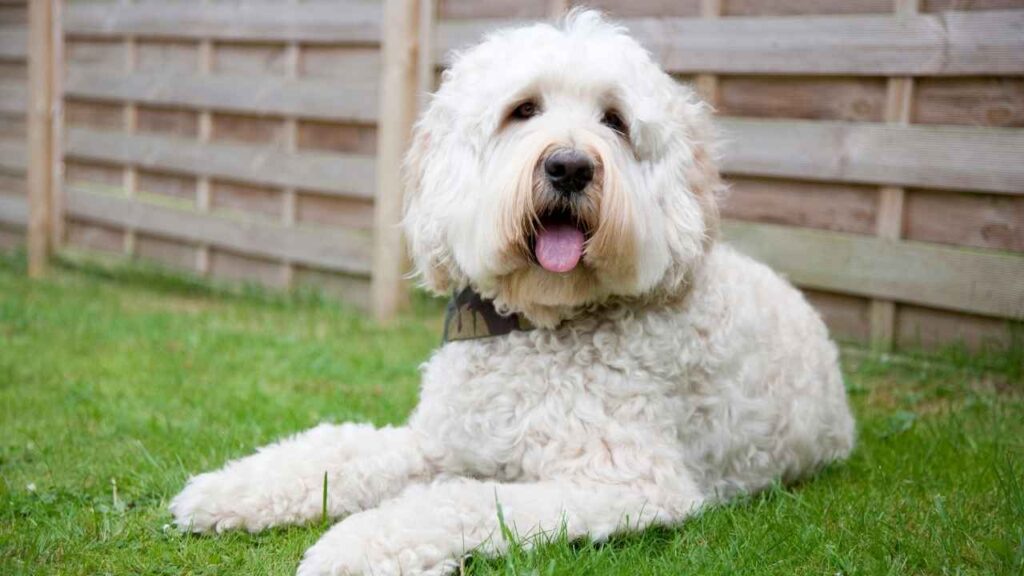
The other poodle mix, the Bernedoodle, is a result of the doodle craze that swept the entire world after the “Labradoodle” came onto the scene and was created by a Canadian breeder, Sherry Rupke of Swissridge Kennels, in 2003. Although the first “Bernedoodle” was possibly the result of mere serendipity. A few breeders intentionally started crossing the Bernese Mountain Dogs with Poodles later on.
Personality Traits
The Happiest Outdoor Enthusiast
Labradoodles are among the most jovial and fun-loving yet also the most popular doodle dogs. They have carried the torch of popularity from Labs. Labradoodles are quite friendly and loyal pups; they get along extremely well with children, making them excellent family pets.
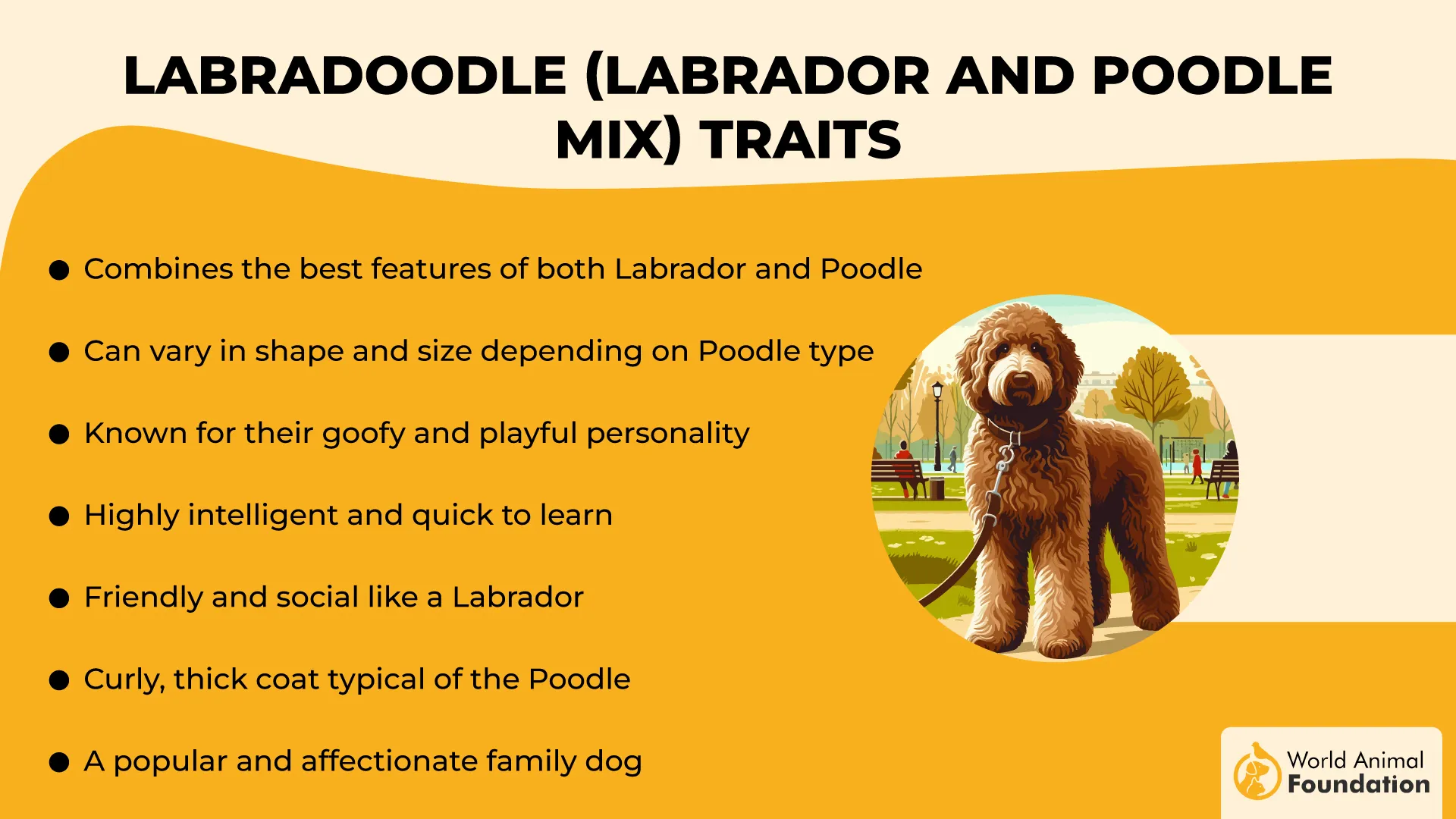
They are outgoing companions and social butterflies. Labradoodles may be slightly easier to train due to their focused and eager-to-please nature. But they benefit more from regular interaction with other dogs and environments to keep their social skills sharp.
The Laid-Back Cuddly Couch Potato and Obedient Fella
Bernedoodles, on the other hand, are also a great combo of affection, playfulness, and smartness. They are a perfect blend of devotion of the Bernese Mountain dog and the intelligence of the Poodle. They are quite big braniacs that also thrive on attention and entertainment, because fun is mandatory for these social bugs.
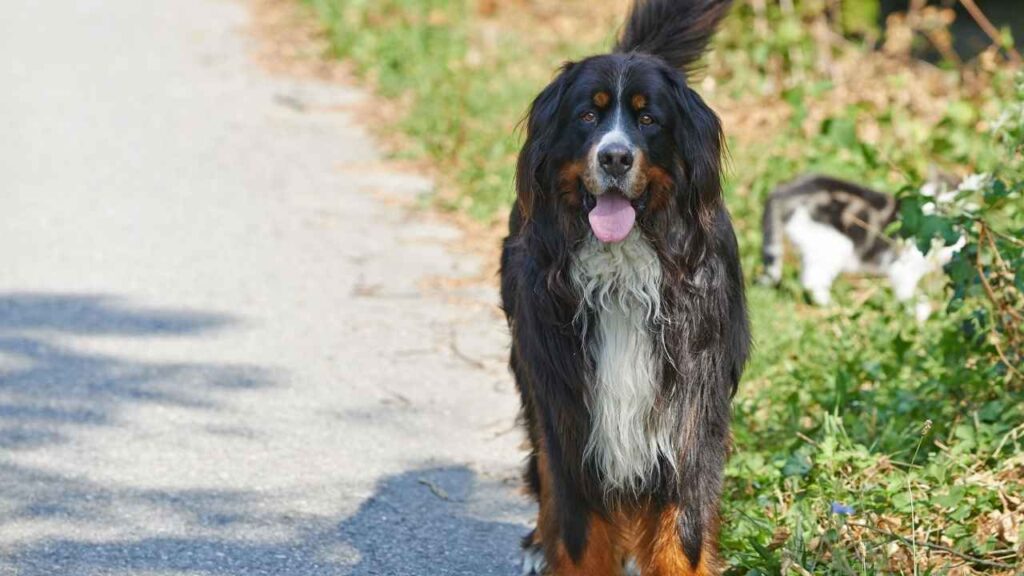
They have a friendly demeanor, and they form strong bonds with their families and make great pets for first-time owners. They thrive in homes where they are always at the center of attention and love. But just be ready for some spunk, because Bernedoodles get stubborn sometimes, which can make training a challenging feat.
Health Considerations
Both Bernedoodles and Labradoodles inherit health problems from their parent breeds. Hence, it is important to get them checked early on for potential health issues. Proper care and grooming are crucial for these unpredictable mixed breeds.
The living situation, health history, and genetics of the puppy and the parent play a major role in the health issues that appear later on. The Bernese Mountain Dog is prone to hip dysplasia and certain types of cancers.
Labrador Retrievers are susceptible to obesity, hip and elbow dysplasia, and eye conditions. Both breeds require regular grooming to keep their fluffy coats healthy.
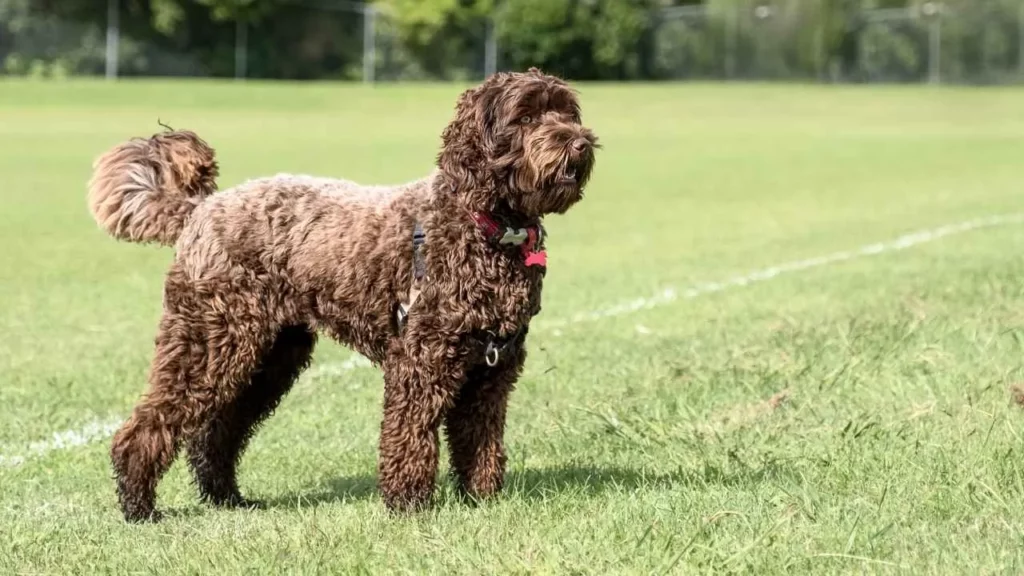
Moreover, choosing a reputable breeder who is keen about health screenings and timely vaccinations for health conditions helps reduce the risk of health issues in both breeds.
The Labradoodles are also prone to hip and elbow dysplasia, skin conditions like sebaceous adenitis, and eye issues like glaucoma, cataracts, and progressive retinal atrophy.
The Bernadoodles are susceptible to hip and elbow dysplasia, progressive retinal atrophy, food allergies, and gastric dilatation volvulus (GDV).
For mental and behavioral health, socialization is essential for both breeds to ensure they grow up to be well-adjusted and respectable dogs.
Socialization is particularly beneficial for Labradoodles due to their higher energy levels.
Early socialization also helps Bernedoodles become well-adjusted dogs comfortable in various environmental situations.
Professional Advice
Factors such as genetics, diet, exercise, and healthcare can influence the lifespan of both breeds. Hence, make sure to feed both your fluffy puffs a good nutritional diet with high-quality dog food. Provide them with creative and fun activities for exercise and focus on their healthcare by finding a dedicated and qualified veterinarian.
Energy Levels & Exercise Needs
Both breeds need daily walks and regular exercise, along with a lot of mental and physical stimulation. Because, of course, they both have a Poodle energy factor mixed up with a strong and sturdy mountain dog like a Bernese or a gun dog like a Labrador Retriever.
Labradoodles, on the other hand, require more vigorous daily exercise than Bernedoodles due to their high energy levels. Both Poodles and Labs are high-intelligence and high-energy breeds.
Hence, you’ll have to find a bazillion ways to keep your Labradoodles engaged (hint: find some water to satiate their mental stimulation needs, they love to swim because they are the descendants of two water dogs and retrievers)
But Purina says Bernedoodles typically have slightly lower energy levels compared to Labradoodles. Because, as per PetMD, the Bernese Mountain dog loves to play and expend energy, but they also love to snooze a lot. Hence, Bernedoodles are ideal for families who appreciate a more laid-back companion and family pet.
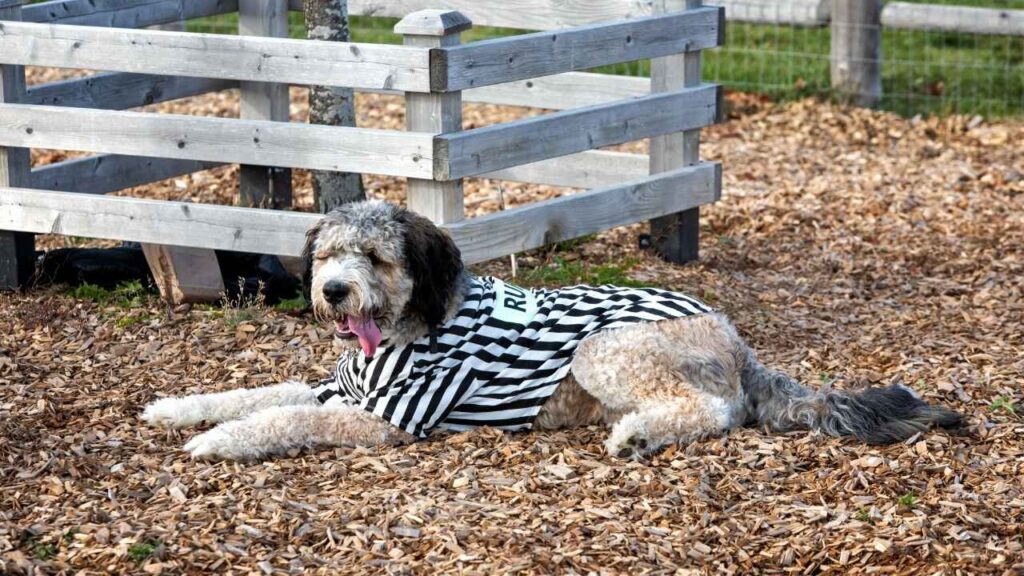
P.S. Activities like dock diving, swimming, and agility trials could work wonders for your Labradoodle, who is well capable of becoming a star athlete, service dog, emotional support animal, and great therapy dog. A Bernadoodle can also benefit a lot from canine sports like obedience and agility.
Both dog breeds respond well to training, but require different levels of attention to be successful. Labradoodles tend to be much less challenging in training compared to Bernedoodles because they carry the independent spirit and aura of the Bernese Mountain Dog.
Bernedoodle vs. Labradoodle: Which Breed Is Right for You?
Now you should make an informed decision by considering all the attributes and needs of these glorious puppies. If you are a true dog lover and have plenty of other pets and dogs at home, then both of these dogs could make a great fit for you. Both breeds can make wonderful companions for families with kids, but they suit slightly different lifestyles.
But know this, that Labradoodles can be quite a handful to maintain because of their peppy attitudes and volcanic energy levels. While Bernedoodles are generally more laid-back and can be ideal for families with younger children, they also have a stubborn streak that you’ll have to deal with quite often.
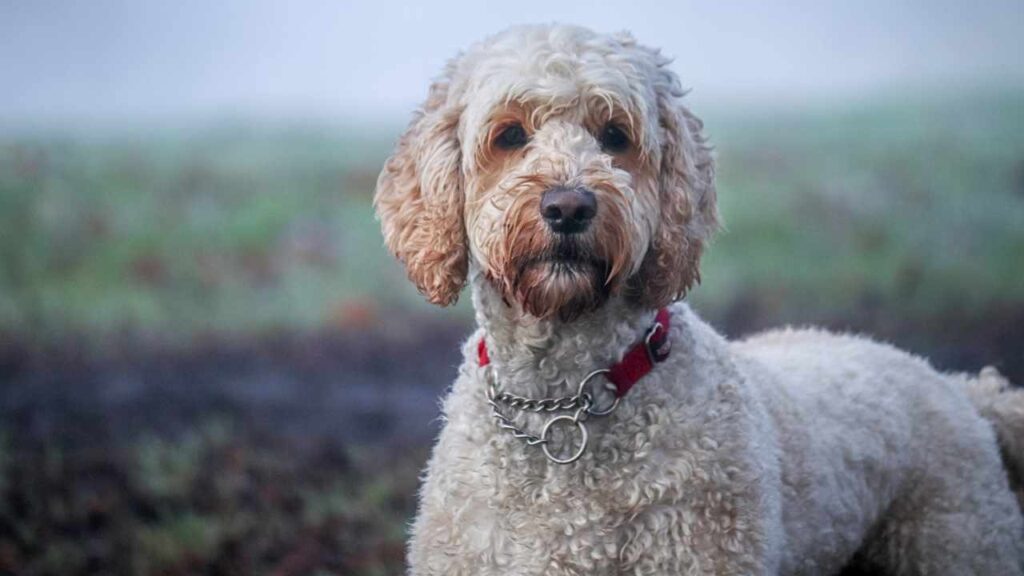
If you are one of those people who judge and choose something based on looks, then although both Bernedoodles and Labradoodles are extremely cute, you might like the Labradoodles better because of their ultimate puppy dog faces and fluffy cloud-like coats. But if you want a sweet and easy-going pup that bonds well with other animals, then opt for the Bernedoodle instead.
Conclusion
These bundles of fluff and dreamy puppies are highly intelligent and quick learners. They are exceptional at following new commands and need a moderately active lifestyle to become the perfect canine companions for dog lovers.
Just make sure that genetic testing and regular vet check-ups, which are recommended for maintaining the health and well-being of these endearing yet popular dog breeds, are taken seriously and followed consistently.


